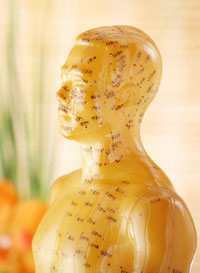New research concludes that acupuncture is effective for the treatment of heart pain, angina pectoris. This condition, commonly referred to as angina, is chest pain due to ischemia of the heart muscle wherein blood supply is restricted resulting in concomitant oxygen and glucose deprivation to the heart. A major cause of heart pain is coronary artery disease due to atherosclerosis.
 The researchers found that acupuncture does not adversely interact with medications. More importantly, the researchers found that acupuncture decreases the frequency of angina and has the ability to reduce the medications dosages needed to be taken by patients. The study notes that acupuncture exerts a rapid and beneficial effective action in the relief of angina and also synergistically combines with the therapeutic effects of the pharmaceutical medication nitroglycerine.
The researchers found that acupuncture does not adversely interact with medications. More importantly, the researchers found that acupuncture decreases the frequency of angina and has the ability to reduce the medications dosages needed to be taken by patients. The study notes that acupuncture exerts a rapid and beneficial effective action in the relief of angina and also synergistically combines with the therapeutic effects of the pharmaceutical medication nitroglycerine.
A meta-analysis of acupuncture’s effectiveness in the relief of angina reveals an effective rate ranging from 80 - 96.2%. No interactions were reported between acupuncture and nitroglycerine, isosorbide mononitrate or propranolol. The study indicates that the use of acupuncture helps to cut down on the side effects of medications by decreasing required dosages. Complications from nitroglycerine usage include headaches, syncope, dizziness and increased angina and hypotension. Complications from isosorbide mononitrate include dizziness, nausea, vomiting, hypotension and syncope. Propranolol may lead to bradycardia, chest pain, hypotension, disturbances of AV node conduction, Raynaud’s syndrome, depression and hyperglycemia. The advantage to adding acupuncture to the medication regime is the immediate reduction of side effects and the increased relief from heart pain frequency, intensity and duration.
The study notes that P6 (Neiguan) “has a therapeutic effect on cardiac and chest ailments including angina pectoris” is a primary acupuncture point to this effect. Other acupuncture points beneficial to the relief of angina noted in the study were P4 (Ximen), HT7 (Shenmen), P7 (Daling), P5 (Jianshi), P3 (Quze), CV17 (Danzhong), CV6 (Qihai), UB15 (Xinshu), UB20 (Pishu), UB 17 (Geshu), UB23 (Shenshu), UB18 (Ganshu), HT 5 (Tongli) and ST36 (Zusanli). The main acupuncture point, P6, is located 2 cun proximal to the transverse crease of the wrist between the tendons of the palmaris longus and flexor carpi radialis. P6 is a Luo-Connecting point and a confluent point of Yinwei Mai (Yin Wei Vessel). According to Traditional Chinese Medicine (TCM) theory, P6 calms the Heart and Shen, regulates, Qi and suppresses pain. P6 is commonly used in an acupuncture clinic for the following indications: chest and cardiac pain, palpitations, stomach pain, nausea, vomiting, hiccups, emotional and mental disturbances and seizures including epilepsy.
Referene:
Xu, L., H. Xu, W. Gao, W. Wang, H. Zhang, and D. P. Lu. "Treating angina pectoris by acupuncture therapy." Acupuncture & electro-therapeutics research 38, no. 1-2 (2012): 17-35.

